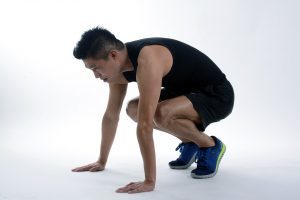When it comes to creativity, precision, style, creativity, and blending all of them together, the sky is the limit of achievement. Of course, there’s no space rocket you can ride on into space, the journey is long and tedious, and you must drive yourself to improve a little every day. No one is going to do it for you.
Want to create something truly special with the piano? You might want to incorporate some scientifically vetted playing techniques to enable the musical magic to come to you sooner.
Stretch Your Fingers to Perfection
Finger coordination and muscle memory is crucial to fluidly play the piano and hit the notes just right. So, it is important to perform stretches to exercise the muscles in your arms and fingers. Here are some suggestions:

- Stretch out your arms horizontally and flex your fingers downwards gradually. It really helps to stretch the muscles in your fingers and forearms and provides you with that much-needed dexterity while performing.
- You can also stretch your arms upwards and try the same movement.
- Curve your fingers and join them at the tips. Apply a little pressure on them, making sure your knuckles do not collapse. Gradually lift a fingertip at a time, maintaining the pressure on the rest, and go back to reconnect them. Repeat this motion for all fingers and once you’ve gained control, do it with non-consecutive fingers.
Practice Hand Shapes
How you position your hands while playing makes a world of difference to the quality of music you produce. You can work on your hand postures even when you are seated at your workstation – all you need is a squishy ball! Pick up the ball and observe the shape of your hand. You should be able to see all three knuckles.
Now, put the ball down, but hold your hand in position. Try touching and using your keyboard with four fingertips and the side of your thumb, keeping your wrist lifted. Hold this position and tap away on the keyboard without allowing your knuckles to wiggle or collapse. If you get this right, you will nail one of the most important aspects of piano playing.
Swim through the Chords
While this may come as a most offbeat piece of advice, it is wonderfully effective for pianists. Go to a pool and splash in with a pull buoy. Use the buoy to keep your legs afloat and concentrate solely on hand movements. Propel yourself forward using your arms.

Swimming involves utilizing all the muscles in the upper body – a feat very few other forms of exercise can achieve. And since your weight is reduced in water, the exercise offers you a marvelous workout without stressing you out too much. A swim session before a particularly challenging performance has been known to work for a lot of pianists.
Listen before You Play
This might seem like a total no-brainer but makes for one of the most effective methods of learning to play any musical instrument, including the piano, well.
Start with slow and easy songs, and try to identify the notes and chords in it. Also find professional recordings of the songs you are learning and compile a playlist you can plug listen to, wherever you are.
Sweat it Out
This one’s certainly going to seem like a whacky suggestion for a performer. Research has shown that outdoor activities and proper exercise stimulates the brain and helps it absorb and retain more information, thus helping a person get better at everything from studies to playing at concerts.

Anything from a run to a session of rock climbing improves oxygen flow to the brain and augments neurotransmitters’ functioning. This helps people learn and remember more and get better at what they do. As for rock climbing, beyond its benefits as an outdoor activity, it also helps build fantastically strong hands and fingers – a pianist’s greatest assets.
While these activities are sure to make for tremendous practice when you are away from the bench, nothing can make up for actually hitting the notes. Key away and here’s to wishing you to keep the spark alive and achieve something special in the world of music!
Featured Image: Image Credit
From military drills to piano thrills: These soldiers do ballet to stay fit. https://t.co/37K1jFp4Yl
— AJ+ (@ajplus) July 19, 2016
Just captivating. #Arctic piano performance next to a crumbling glacier https://t.co/EIKWkIzuF7 pic.twitter.com/ymGUFZpYm0
— Racing Extinction (@RacingXtinction) July 15, 2016
Related Articles:
Need for Speed: 5 Piano Finger Exercises to Increase Speed
Do you have a need for speed? Below, piano teacher Ryan C. shares some piano finger exercises that will help you increase speed when playing the piano…
What makes a great pianist fun to watch? Is it his or her sense of musicality and his or her ability to play gorgeous music with apparent ease? I think both.
However, there is another skill that really makes a pianist great…speed!
Have you ever watched an amazing pianist play ridiculously fast and wondered to yourself: “How in the world does he or she do that?”
I’m here to give you some insight into how pianists are capable of playing at such fast speeds. The remainder of this article will give you a few piano finger exercises that will substantially improve your piano playing speed. Via TakeLessons
8 Essential Exercises to Reduce Pain and Increase Dexterity While Playing Piano
I’m not going to be a snob and discount other instrumentalists’ right to say their craft requires special attention and unique skill. However, I will say that piano is undoubtedly among the toughest instruments to holistically master. In order to protect your musical longevity as a pianist, it’s important to take time to condition your muscles, properly exercise your tendons and ligaments, and ensure your joints are cared for. Key areas we’ll focus on in the below exercises are knuckles, wrists, forearms, shoulders, and the surrounding muscles. In order to flawlessly execute more technical pieces, you must acquire enough muscle memory and strength to be able to relax your entire body, because when you’re tense, you’re hindered and at risk of injury. Via SonicBids
SUPERCHARGE Your Piano Technique with the Tausig Exercise
Artist and teacher Cory Hall is one of the leading pianist-composers today whose specialty is sacred and secular character works and exciting ragtime arrangements. Drawing upon his experience as a classical piano virtuoso, ragtime pianist and church organist he explains a technique to build strength and endurance in your hands.
Please try this but go slowly and work only until you feel the fatigue in your hands. If you do a little every day you will go longer and longer before the fatigue sets in and find new power when you play like you have never had before! Via Great Piano Videos

